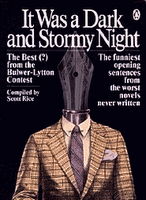My new schedule at the restaurant means I work forty hours in three and a half days: Monday I work twelve, Wednesday I work six, and then eleven each on Friday and Saturday. The long day on Monday makes it a challenge to write Sunday through Thursday, which is my goal. But here I am.
Mondays at the restaurant are fun and challenging because it is the day after the weekend, which means there have been no produce deliveries in Sunday and I get to take stock of what is left over and what had been left undone after the busiest days of our week. Last night about midnight, Robert, the head chef, called to tell me Sunday had been especially busy and I might need to come in a bit early. He’s never done that before. I went in at nine instead of ten.
Being the lunch chef means I have a lot of room for creativity because I’m the only one there and because it’s my job to turn the leftovers into the special of the day. Today that meant I made Uncle Milty’s Guinness and Chocolate Chili (better known as Red Lion Chili at the restaurant) for the soup du jour and a roasted statler chicken breast with caramelized onions and mushrooms in a Guinness demi-glaze (can you spot my favorite ingredient?) with roasted garlic mashed potato cakes and green beans. Though some folks tried my creations, most came in for a burger on a holiday afternoon. The funny thing was almost everyone had some change they wanted to make from the way things were listed on the menu: mixed greens instead of fries, onion rings on the side, and who knows what else. Today, the menu was only a suggestion to most, as if everyone had watched When Harry Met Sally and came into to do their best Meg Ryan impression and order everything on the side.
Two of the requests I remember in particular. One man was allergic to wheat, which meant he couldn’t eat the potato cakes (flour) or the demi-glaze (Guinness); the bartender wanted to know if I could figure something out so the man try the special. I had some potatoes that had not been made into cakes and I made a sauce for the chicken out of butter and roasted garlic. Not only did the man get to eat, but he thoroughly enjoyed his meal. The second request came from a woman who comes in regularly and has yet to order off the menu. A couple of weeks ago, she came in and asked if we could make Fettuccine Alfredo. The simple answer was yes. Last Monday night she was less specific – she just wanted something other than what was in print – so I made her a vegetable risotto. Tonight she came in and asked the bartender, “Is Milton cooking tonight?” When he said yes, she asked him to ask me what her options were. What I had was wild mushroom risotto (leftovers) that I doctored up a bit to give it a little more pizzazz. Her husband ordered the chicken special. When I went out to the pub to get some cranberry juice and check the Sox score, I had a chance to talk with them a bit. They were both quite happy. So was I.
I smile at myself because I get such a rush from being able to cook for people. I’m glad folks ask for food the way they want it. I love that someone knew if I was there I would fix a dinner just for them. I wish I had a place where I could talk to them while I was cooking. Who knows – maybe someday. For tonight, I’m just thankful I get to do what I love doing.
Peace,
Milton








